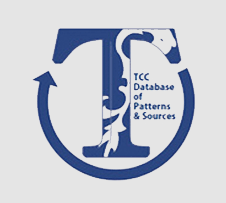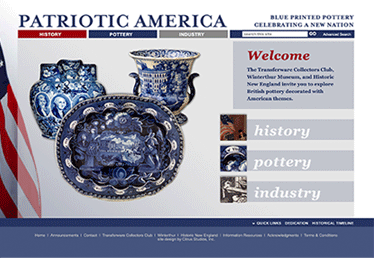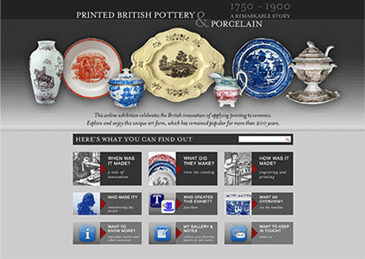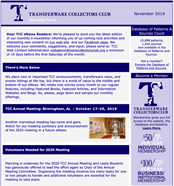


18,691 patterns and 1,139 sources and still growing.
Each month we feature a new pattern from our Pattern and Source Print Database and archive them on these pages.
Members only: for more information about these patterns and to see other similar patterns, search the Pattern and Source Print Database.
(Click on thumbnails to see larger images)
Shown is an 11 inch by 9.25 inch reticulated tray from the Napoleon's Battles series by Charles James Mason & Co. (1826-1845). The name of this scene, Siege of Toulon, is printed near the bottom left of the center. The series is also found printed in blue, green, brown and pink with many Napoleonic scenes.
"Water Lily" printed in underglaze blue by Wedgwood (1759 to the present). According to Coysh and Henrywood in the Dictionary of Blue and White Printed Pottery 1780-1880, the pattern is also known as Lotus. The pattern was introduced in brown in 1808. It was first printed in blue, with a change to the border, in 1811.
The Botanical patterns were among the earliest to be used by Wedgwood for underglaze blue printing. First produced in 1808-9, the patterns were based on illustrations in various contemporary botanical magazines, including the Botanist's Repository, Paradisus Londinensis and the Botanical Magazine. Seen here is an 8 inch plate in the series.
Shown is an 18.5 by 15 inch platter, Akbar’s Tomb Secundra, made by Chamberlain (s) (& Co.) 1786-1852. The pattern is part of as series of Indian views. Visit more information and other archived patterns to learn more about this pattern. The source print for this pattern is from Robert Elliot’s “Views in the East,” which was published in 1833 in London.
Found on a 9.75 inch pearlware plate, this pattern has the factory name, "Botanical Vase". There are many patterns that are similar by other makers. The vase and its large bouquet of flowers are printed against a beaded medium blue ground. The only border is the stringing at the edge of the plate. The pattern, circa 1820, is found on dinnerware, toilet ware, and tea ware. There are various designs in this pattern, each featuring differing floral arrangements. The vase is always the same. The pattern was made in dark blue for the American Market.
Seen is a 5.5 inch saucer by an unknown maker, ca. 1820. It is printed in brown and colored under the glaze in blue, yellow, and green. This type of decoration is sometimes known as Salopian in the United States and Underglaze Printed Polychrome in England. The two left-most figures come from "View of the Suburbs of a Chinese City” by Sir George Leonard Staunton. The boat comes from "Chinese Barges of the Embassy Preparing to Pass under a Bridge" from the same book.
Plate, 7 inches. Made by Enoch Wood & Sons (1818-1836), this pattern is part of a series of European scenes that is known as "No. 106" Series. This pattern pictures St. Pietro de Castello in Venice, after a drawing by Clarkson Stanfield that was engraved and published in "Heath's Picturesque Annual for 1832". Yellow is one of the less common colors found on transferware.
Rich with content for ceramic collectors, researchers, authors, curators, and historic archaeologists, the sites are sure to deliver value for their visitors. The exhibition’s curators continue to enhance them and, now, with site application upgrades, including a new magnification feature and upgraded content management capabilities, the TCC and its collaborators are pleased to relaunch these exhibits, all free to a worldwide audience.

Branded Patriotic America, debuted in 2014 in collaboration with Historic New England, and the Winterthur Museum

Launched in 2015 in partnership with the Northern Ceramic Society.
 Not a member but want to receive email updates?
Not a member but want to receive email updates?